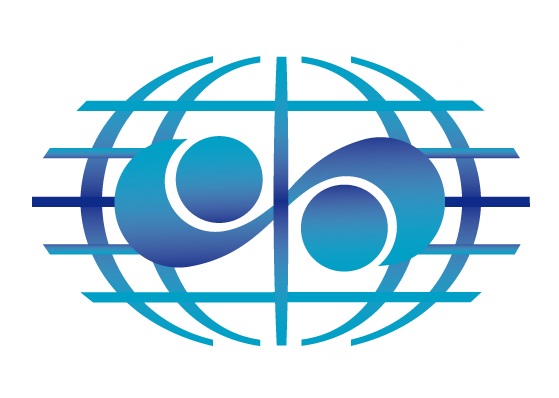Water information system for early warning systems for flood and drought period management
Key points
- The human and economic impacts of flood and drought periods can be particularly high, and information systems on these aspects can help to mitigate the risk and to reduce these impacts;
- Information and adapted tools supporting risk knowledge, communicating warnings to reduce disaster risks, and considering environmental and social vulnerability assessment, are of crucial importance;
- Information systems in this domain generally take a multisectoral approach as they require combining data sources from national weather and hydrological services, agricultural extension services, and public databases, as well as data streams from international partners providing remote sensing datasets
Improving drought and flood forecasting and early warning systems is essential considering the potential human and economic impacts of these events. As part of the measures to improve adaptation to climate change, early warning systems can also help decision-makers and private individuals to prepare for climate-related natural hazards and improve their readiness to harness favourable weather conditions.
Early warning systems for natural hazards need to have a sound scientific and technical basis, and focus on the people exposed to a particular risk. They should include a systems approach that incorporates all of the relevant factors in that risk, whether arising from natural hazards or social vulnerabilities, and from short- or long-term processes. An effective, comprehensive early warning system comprises four interacting elements, namely:
- Risk knowledge,
- Monitoring and warning service,
- Dissemination and communication,
- Response capability.
Early warning systems are usually cost-effective non-structural measures. Their cost is non-negligible in absolute terms and extremely low in comparison with the potential losses that these systems can reduce
Flood risk warning systems
Floods have the potential to cause fatalities, displace people and damage the environment; they can severely compromise economic development and undermine the economic activities of a community.
Throughout the world, different types of floods occur, such as river floods, flash floods, urban floods and floods from the sea in coastal areas. The damage caused by flood events may also vary across countries and regions.
Information systems included in flood warning systems should facilitate data access, processing and management, as well as the dissemination of information necessary for:
- Forecasts of hydro-meteorological phenomena that could cause floods, coupled with early warning systems;
- Protection against floods (dikes, diversions, retarding reservoir dams, dynamic braking, storage areas, catchment area management);
- Prevention that involves the mapping of hazard-prone areas, according to different levels of hazard (decadal, centennial floods, and even beyond) and an estimate of vulnerability.
A flood warning system relies on an effective service, which is forecasting floods on the transboundary basin scale, and operates closely with member states and specialized national agencies (meteorological and hydrological services). The central warning service could be installed in the transboundary basin organization, if its mandate includes flood control.
Once fed with meteorological and hydrological data, the service is able to calculate the evolution of run-off in the basin and consequently of water levels in streams and rivers. This is then compared with predefined warning levels to provide information on the occurrence of risk or not, and determine the onset of the alert. The signals related to flood forecasting should be addressed to governments that are responsible for protecting people and property and for implementing adequate and graded procedures.
In addition, in order to establish an effective information tool and a valuable basis for priority setting and further technical, financial and political decisions regarding flood risk management, it is necessary to establish flood hazard maps and flood risk maps. These maps show the potential adverse consequences associated with different flood scenarios, including information on potential sources of environmental pollution as a consequence of floods.
Drought early warning system
As part of drought early warning systems, information systems are designed to facilitate the identification of climate and water supply trends and thus to detect the emergence or probability of occurrence and the likely severity of drought. This information can reduce impacts if delivered to decision-makers in a timely and appropriate format and if mitigation measures and preparedness plans are in place. Understanding the underlying causes of vulnerability is also an essential component of drought management, considering that the ultimate goal is to reduce risk for a particular location and for a specific group of people or economic sector.
At present, the analysis and preparation of information are particularly critical parts of an early warning chain. Decision-makers are usually confronted with huge amounts of structured and unstructured data. To enable reliable early warning, the available data must be pre-selected, analysed and prepared. The decision-makers should be provided with a reliable and manageable amount of information to make the warning decision and take preventive measures. Limitations include failure to allow for non-climatic confounding factors, limited geographical/temporal resolution, and lack of evaluation of predictive validity.
The need for interinstitutional cooperation
In many countries, data needed for implementation of drought monitoring systems are scattered around multiple agencies that are dependent on different ministries. This requires collaboration across ministries through a multi-sectorial approach, which often cannot be effectively implemented without direct support from high-level policy makers. Monitoring and early warning systems require combining data sources from national weather and hydrological services, agricultural extension services and public databases as well as data streams from international partners providing remote sensing datasets to fill data gaps, particularly in Africa, or global/regional weather and climate model outputs. This requires technological solutions that allow the integration of multiple data sources with different temporal and spatial resolutions. An additional challenge is that they often have a complex data structure with data exchange formats that need to be handled to allow their integration in a seamlessly working system.


